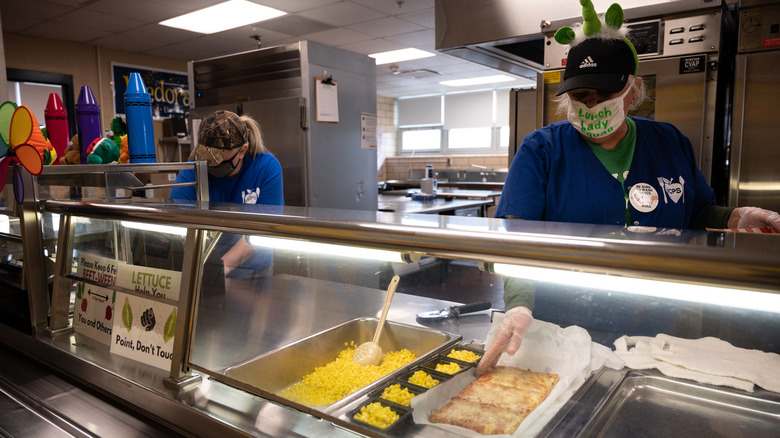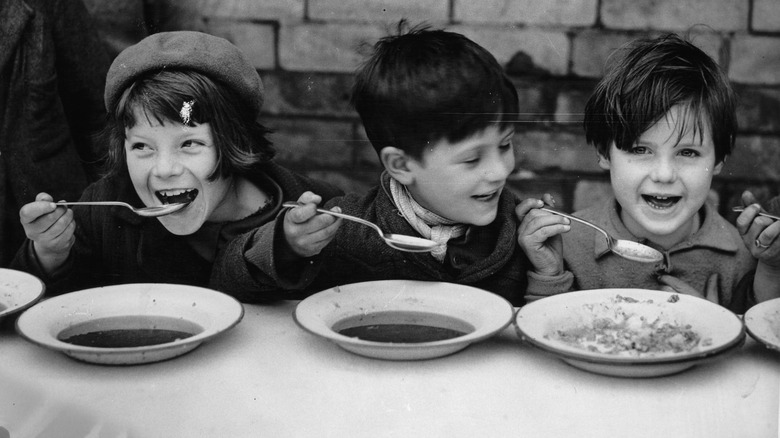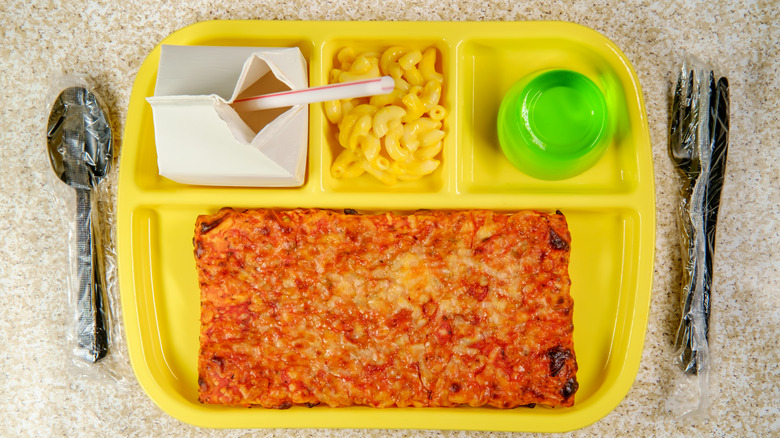How School Lunches Became Popularized In The US
In the United States, where The New York Times notes there is much stigma around cafeteria lunches, not much thought goes into where and how they originated. One could argue that Sloppy Joes, rectangular pizza, and the classic PB&J don't really get the love they deserve. But according to NPR, foods commonly served as school lunch tend to be low-quality, poorly prepared, and lacking in nutrition, sometimes even being discarded by schoolchildren — though some schools are working to change that.
But free and low-cost meals at schools have maintained a presence for a reason: they've benefitted students and their families for years. In New York City, where all public school students qualify for free lunch, students in elementary school, middle school, and high school can receive both breakfast and lunch on a daily basis, according to the New York City Department of Education. This saves families both time and money, not causing either parents or students to worry about packing food or spending money on lunch. So, despite its harsh stereotypes (and sometimes harsh reality), school cafeteria food isn't really that bad, and is intended to do more help than harm in the end.
Where and when did school lunches get their start?
School lunches were introduced in the second half of the 19th century, a time when more children began attending school, according to Teach for America. They started off as affordable meals that schoolchildren could purchase with a penny in Philadelphia, followed by Boston. School lunch programs then continued to spread across the country, spurred by the Great Depression in the 1930s, to feed students for a low cost. These programs expanded to offer breakfast in 1966 thanks to President Lyndon B. Johnson's War on Poverty, and in 1968, began offering summer meals as well.
Although these laws were designed to help low-income students, in just the years prior to the 2020 coronavirus pandemic, 29.6 million students now receive lunch from the National School Lunch Program (NSLP) on a daily basis, according to the School Nutrition Association. This includes 20.1 million served free, and 7.7 million served at full-price, showing the range of students who consume school lunch on a daily basis.
What did the first school lunches look like and how did they become popular?
It may surprise you that some of cafeteria pizza and meatloaf's ancestors included beef and barley soup, celery and nut salad, and a piece of fruit, according to a 1912 sample menu from Teach for America. In the years following, school lunches took on the forms of peanut butter and cottage cheese sandwiches in the 1930s and the pork product scrapple in the 1940s, according to Mental Floss, and often relied on surplus food sent to schools. However, due to World War Ⅱ, funding for school lunches had declined, leading to fewer children eating these meals.
It wasn't until 1946, when President Henry S. Truman signed the National School Lunch Act, when eating school lunch became popular again, according to PBS.
School lunches then integrated more "ethnic" foods such as chili and enchiladas into their menus, per Mental Floss. As more students attended schools located further from their houses, more people began to eat school meals because of their inability to travel home for lunch.
Today, school lunches still serve as a way for low-income families to provide their children with a nutritious meal and are a great convenience for those who simply don't have time to put together something in the morning. Whether you're a school lunch superfan or hater, you can't ignore the fact that those mozzarella sticks and mac n cheese were always there for you when you forgot to pack a brown paper bag.


